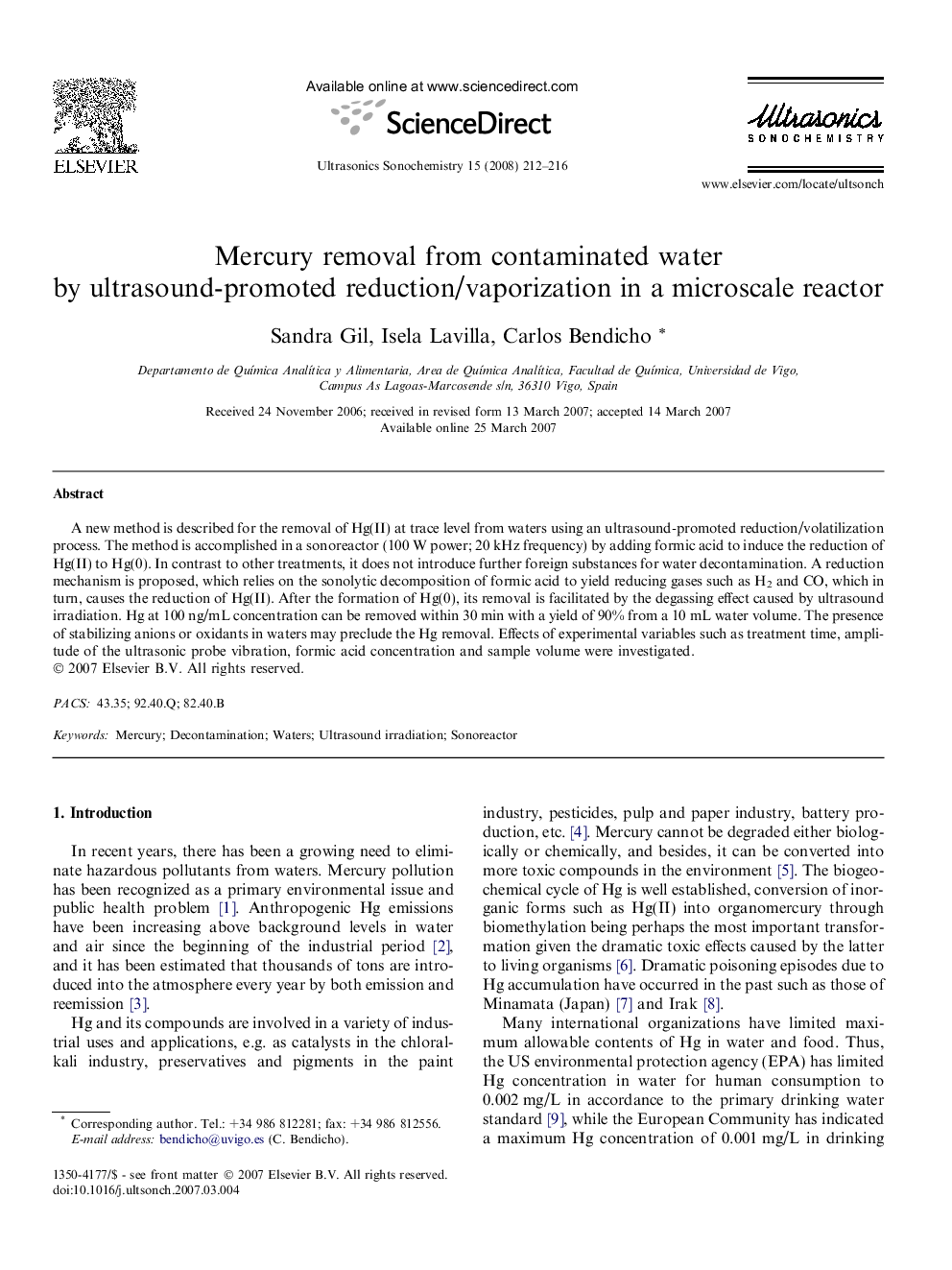| Article ID | Journal | Published Year | Pages | File Type |
|---|---|---|---|---|
| 1269983 | Ultrasonics Sonochemistry | 2008 | 5 Pages |
A new method is described for the removal of Hg(II) at trace level from waters using an ultrasound-promoted reduction/volatilization process. The method is accomplished in a sonoreactor (100 W power; 20 kHz frequency) by adding formic acid to induce the reduction of Hg(II) to Hg(0). In contrast to other treatments, it does not introduce further foreign substances for water decontamination. A reduction mechanism is proposed, which relies on the sonolytic decomposition of formic acid to yield reducing gases such as H2 and CO, which in turn, causes the reduction of Hg(II). After the formation of Hg(0), its removal is facilitated by the degassing effect caused by ultrasound irradiation. Hg at 100 ng/mL concentration can be removed within 30 min with a yield of 90% from a 10 mL water volume. The presence of stabilizing anions or oxidants in waters may preclude the Hg removal. Effects of experimental variables such as treatment time, amplitude of the ultrasonic probe vibration, formic acid concentration and sample volume were investigated.
